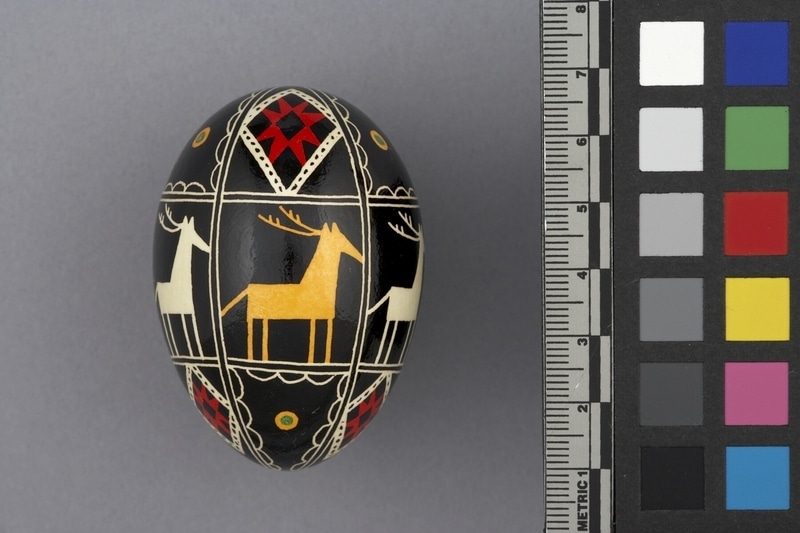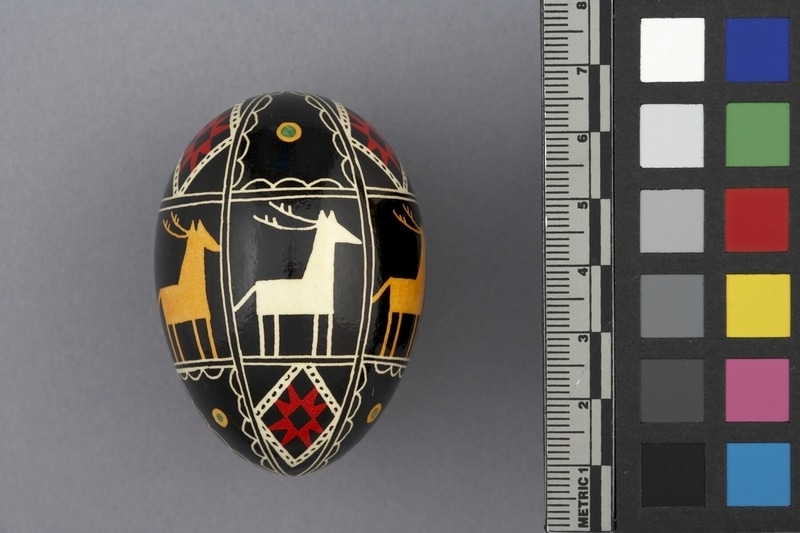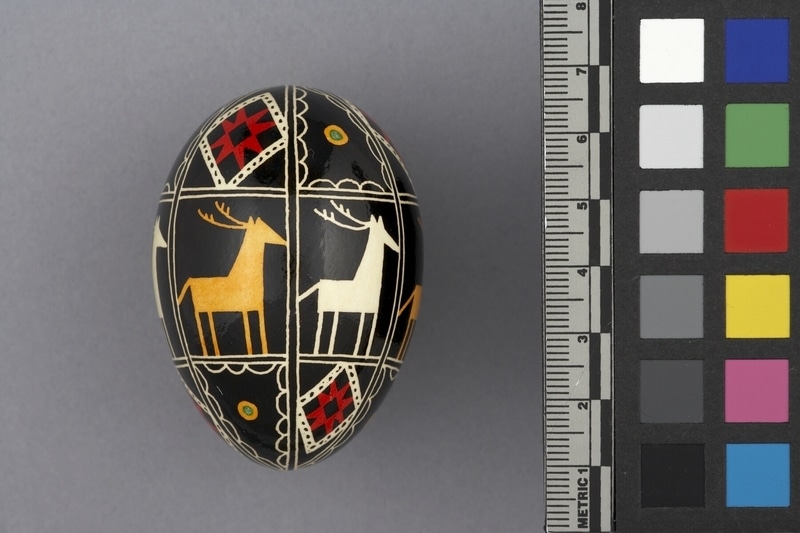Egg Item Number: Ch40 from the MOA: University of British Columbia





Description
Easter egg with black background divided into 6 longitudinal sections, divided by white lines which intersect at the top and bottom. 2 horizontal lines around egg, dividing the space into 18 sections. The centre 6 sections contain alternating stag motifs of yellow and white. Top and bottom 12 sections have a red star alternating with green and yellow dots. The egg is hollow and fragile. There is a tiny hole at one end.
History Of Use
Pysanka (decorated eggs) are a traditional folk art with pre-Christian roots. Eggs in early times were associated with sun worship, with the yolk representing the sun, and whites the moon. Eggs were used to greet the Spring. Greeting the Spring is still important, however. Easter is their most important association. These eggs are considered benevolent talisman. Children receive light coloured eggs with floral designs. Teenagers are given eggs with blank spaces to represent lives yet to be lived. Married couples receive 40 triangle eggs representing all aspects of their lives together. Older persons are given eggs with black belts, ladders and gates representing heavenly bridges. The eggs are made at night by gatherings of mentally and physically purified women. They are given and exchanged in many contexts.
Narrative
From the Mykhalylo Huculak Hutzulian Folk Art Collection. They are made by resist dying with bees wax applied in various layers and melted off.
Cultural Context
ritual; folk art
Iconographic Meaning
The decorations on pysanka eggs symbolize hope, happiness and protection from evil. When a women is in the process of making the egg, goodness is said to be transferred to the design and to the household. Design is called 'olehi', meaning stags.
Item History
- Made in Ukraine before 1978
- Owned by Maria Yasegn before November 2, 1978
- Received from Maria Yasegn (Donor) on November 2, 1978
What
Who
- Culture
- Hutsul
- Previous Owner
- Maria Yasegn
- Received from
- Maria Yasegn (Donor)
Where
- Holding Institution
- MOA: University of British Columbia
- Made in
- Ukraine
When
- Creation Date
- before 1978
- Ownership Date
- before November 2, 1978
- Acquisition Date
- on November 2, 1978
Other
- Condition
- excellent
- Accession Number
- 0493/0023